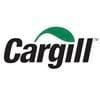I. INTRODUCTION
The significance of vitamin K (VK) to human health, well-being and ageing is currently receiving worldwide attention. Beyond its role in coagulation, the importance of VK in bone health is well established. Other roles in cardiovascular disease, inflammatory response, neural and cognitive health are currently under investigation (Card et al., 2014). Vitamin K1 (phylloquinone, VK1), occurs naturally in Fresh, Leafy, Green, (FLG) plant material and in the tissues (including eggs and milk) of animals consuming the same plant materials. The ‘modern’, processed, human diet is low in VK for several reasons:
1. Consumption of VK1 rich foods, especially FLG vegetables, has declined in many populations (ABS, 2015);
2. Loss of VK1 occurs due to light exposure in post-harvest storage of vegetables (Biffin et al., 2008);
3. Low fat diets are recommended by some health professionals/organisations. Absorption of dietary VK1 requires co-consumption of fat, and;
4. FLG material, and hence VK1, has been removed from the diet of many food production animals.
Many of the VK dependent proteins are conserved through the animal kingdom, and animal models have been widely used to inform the VK requirements of humans; yet the role of VK in animal health has received little attention. For example, osteocalcin is a well-known VK dependent protein. It is the most abundant, non-collagenous protein found in the bone of all vertebrates (Lanham-New, 2008). Its synthesis is dependent upon vitamin D but its ability to bind calcium is dependent upon VK.
In the absence or severe dietary shortage of VK, bone mineralization and bone strength are compromised (Binkley et al., 2002). The VK requirements of domesticated and farmed animals are, however, rarely considered beyond what is required to maintain normal blood coagulation. Several large studies of human populations have shown a direct correlation between increased VK intake and decreased risk of hip fracture (Shea and Booth, 2016). We propose that some of the diseases of VK deficiency, especially those involving bone mineralization, may have parallels in the animals we feed. Two separate studies were conducted to determine if addition of VK1 to a standard layer ration could:
1. Improve bone mineralization in the laying hens, and;
2. Increase vitamin K1 content of eggs for the benefit of the consumers.
II. MATERIALS AND METHODS
In the first study, a colony of 42 ISA Brown hens at point of lay was housed in 6 separate cages with 7 birds per cage. All hens were fed a standard commercial layer ration providing 250 µg/hen/day of Menadione Nicotinamide Bisulphite (MNB) as the dietary source of VK. After a period of 5 weeks, consistent laying was achieved. At 27 weeks of age the hens were divided into two groups. Group A was fed the same commercial layer ration. Group B was fed a diet that contained VK1 (as QAQ®3 ) instead of MNB, also at 250µg/hen/day. At this time, the metatarsal bones of all hens were assessed using Radiographic Bone Aluminium Equivalence (RBAE) (Meakim et al., 1981). This assessment was repeated at 36 weeks and changes in bone density were calculated.
In the second study, two groups of 11 Australorp hens were fed diets containing either MNB or VK1 (as QAQ®, a water-soluble, UV protected Vitamin K1 supplement, which is a registered product of Agricure Pty Ltd) in equimolar concentrations. The number of eggs from each feed group was recorded daily. Every 4 weeks, all eggs were assessed for: egg weight, yolk weight, shell thickness and VK1 content. VK1 was measured by HPLC using reverse-phase C18 column and post-column reduction according to the method of Jakob and Elmadfa (2000).
III. RESULTS
In the first study, addition of VK1 to the ration of laying hens resulted in a significant increase (P < 0.001) in bone density over a 9 week period. Hens consuming a commercial diet, with no added VK1, showed a significant decrease (P < 0.001) in bone density over the same period of time. In the second study, hens fed a diet supplemented with VK1 laid eggs containing significantly more (p < 0.01) VK1 than the unsupplemented hens. The presence of VK1 in the unsupplemented eggs is due to small amounts of VK1 present in the ingredients of the commercial diet, especially soy meal and canola oil. No significant differences were found in egg mass, yolk mass or shell thickness (Table 1). An unexpected finding was that hens fed the supplemented ration laid more eggs over the duration of the study (48 weeks). The supplemented hens continued to lay at > 80% compared to 65% for unsupplemented hens at 90 weeks of age (Data not shown).
Table 1 - Mean concentration of VK1, egg mass, yolk mass and shell thickness for VK1 supplemented and unsupplemented hens.
IV. DISCUSSION
The aim of Study 1 was to determine if addition of VK1 to the ration of laying hens could improve the bone density of these hens (as assessed by RBAE). At 36 weeks of age, hens fed a VK1 supplemented diet, showed a 3.8% improvement in bone density compared to the unsupplemented group, which showed a 5.4% decline in bone density from the 27 week baseline. Bone disorders have been a perennial problem in the poultry industry (Knowles et al., 2008) and, despite efforts to identify underlying dietary causes, the condition remains largely unresolved. Given that VK is an essential cofactor in the activation of osteocalcin, it is likely that VK deficiency plays a significant role in bone weakness. Further research is required to confirm these findings and to determine if the bone density of broilers could also be improved with VK1 supplementation.
The aim of Study 2 was to determine if increased VK1 in the hen diet resulted in increased VK1 in the eggs. The eggs from supplemented hens contained up to 14.7 µg/100g yolk (mean 9.9µg/100g yolk). Research suggests that much of the population is VK deficient (Hayes et al., 2016, Shea et al 2008, Thane et al., 2006) yet the addition of VK1 to human food is not permitted in Australia, with the exception of Infant formula (NHMRC, 2006). Hen eggs enriched with VK1 represent an ideal delivery system – providing both UV protection and a fat-rich medium for this vitamin. Enrichment of eggs can contribute to the daily intake of VK1 for consumers, especially those reluctant to eat or unable to access FLG vegetables. An unexpected finding in Study 2 was the laying of more eggs by the supplemented hens compared to the unsupplemented hens. In a study by Lavelle et al (1993), hens in a VK1 deplete diet laid more eggs than those given a standard diet containing MNB. The effect of MNB on laying efficiency warrants further investigation. Whilst these results were generated from a relative small number of layers, they do suggest that supplementation of the layer diet with VK1 may improve bone density in the hen, can enrich eggs for human consumption and may improve or extend layer efficiency. Further study with more replicates is required to consolidate the findings.
Presented at the 29th Annual Australian Poultry Science Symposium 2018. For information on the latest and future editions, click here. 














